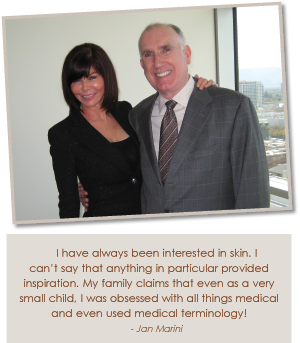
Those who know Jan Marini refer to her as a visionary. While Jan might agree in principle, she sees this characterization as both a strength and a weakness. She envies those who are able to savor the moment. Where others view life in snapshots that capture real time, Jan sees broad borderless landscapes and endless possibilities. She does not see a product, she sees a business and in that same instance her mind is flooded with the business plan and all the accompanying details. Even when she is not envisioning empires, she is never satisfied with the status quo.
Given her background, perhaps this is an understandable if not necessary survival tool. Jan’s mother, Florence, was a single mom of three boys in an era when divorce carried a major stigma. Florence remarried and unexpectedly gave birth to Jan late in life. The family struggled to live a very meager existence. Her father died when she was eight years old and the family was thrust into poverty. Florence worked only menial jobs and food was often scarce. It was no wonder that Jan viewed her world not as it was, but as it might be, and that she softened the bleak reality by envisioning a larger and more optimistic scenario brimming with potential. Because of her early circumstances, Jan is adamant that in order to succeed you must be tenacious, doggedly determined, and completely focused on the ultimate goal.
Jan describes herself as a product researcher. “Back in the early days I was considered a product ingredient expert. I lectured to medical professionals, skin care professionals, and consumers about how ingredients really performed and what they could realistically expect to provide.” She also did talk radio and T.V., because as she puts it, “consumers love to hear about ingredients and whether their products really work. It is a popular topic that lends itself to talk shows.”